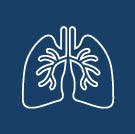Filter by Knowledge Space:

Aptar Digital Health

Aptar Pharma

Bespak


Bespak


Bespak

Cambridge Healthcare Innovations

Chiesi Farmaceutici

Chiesi Limited

DFE Pharma

Federation University


FLUIDDA


FLUIDDA
Navid Monshi Tousi and Hosein Sadafi
Impact of Anatomical Variability on Nasal Deposition in Pediatric Subjects of the Same Age and Gender
FLUIDDA

FLUIDDA

H&T Presspart

Honeywell

Hovione

Hovione


Hovione

Intertek

INTO

Johns Hopkins University

Kiel University

Kindeva

Kindeva

Lakehead University

Lakehead University
Mona Mohammadkhani
Enhancing the Efficiency of pMDIs Through an Innovative Mesh Grid Design
Lonza


Lonza
Beatriz Noriega Fernandes and Emily Osborne
Fine-Tuning Spray-Dried Inhalable Powders: Impact of Component Saturation on Performance
Ludwig-Maximilians-University Munich


M2M Pharmaceuticals
Vaishnavi Kapileshwari and Mridul Majumder
Predicting Blend Performance of a Dry Powder Inhalation Formulation Using Raman Spectroscopy
Macquarie University

Monash University


Monash University
Michael Pangestu and Nicolas Buchmann
Experimental Investigation of the Air and Droplet Dynamics of a Soft Mist Inhaler
Nanopharm

Nanopharm

Nanopharm

Nebu~Flow

Nebu~Flow

Orbia Fluor & Energy Materials

Orbia Fluor & Energy Materials

Orexo AB

Oz-UK Limited

PARI Pharma
SH
Phillips Medisize

Phillips Medisize

Phillips Medisize

Politecnico di Torino

Politecnico di Torino

RIGImmune

RIGImmune

Solvias

Therakind Limited


Trudell Medical International

Trudell Medical International

University of Hertfordshire

University of Hertfordshire


University of Hertfordshire
Giorgia Vaccaro and Darragh Murnane
Development of a Single Actuation Impaction Method for Aerosolization Assessment of Soft Mist Inhalers: Comparison for MRX004 and Respimat®
University of Leeds

University of Limerick


University of Parma
Stefania Glieca and Irene Rossi
Bulk Excipient Screening of a Spray Dried Glucagon-Like Peptide 1 Receptor Agonist Formulation
University of Parma

University of Toronto

Virginia Commonwealth University


Virginia Commonwealth University
Rudra Pangeni and Michael Hindle
In Vivo Deposition and Retention of Ciprofloxacin Liposomal Dry Powder Aerosol
Woolcock Institute of Medical Research


World Medicine
Gozde Fidan and Sulenur Ekmekci
Comparison of Solution and Suspension Nasal Spray Formulations by Laser Diffraction and Next Generation Impactor Methods












